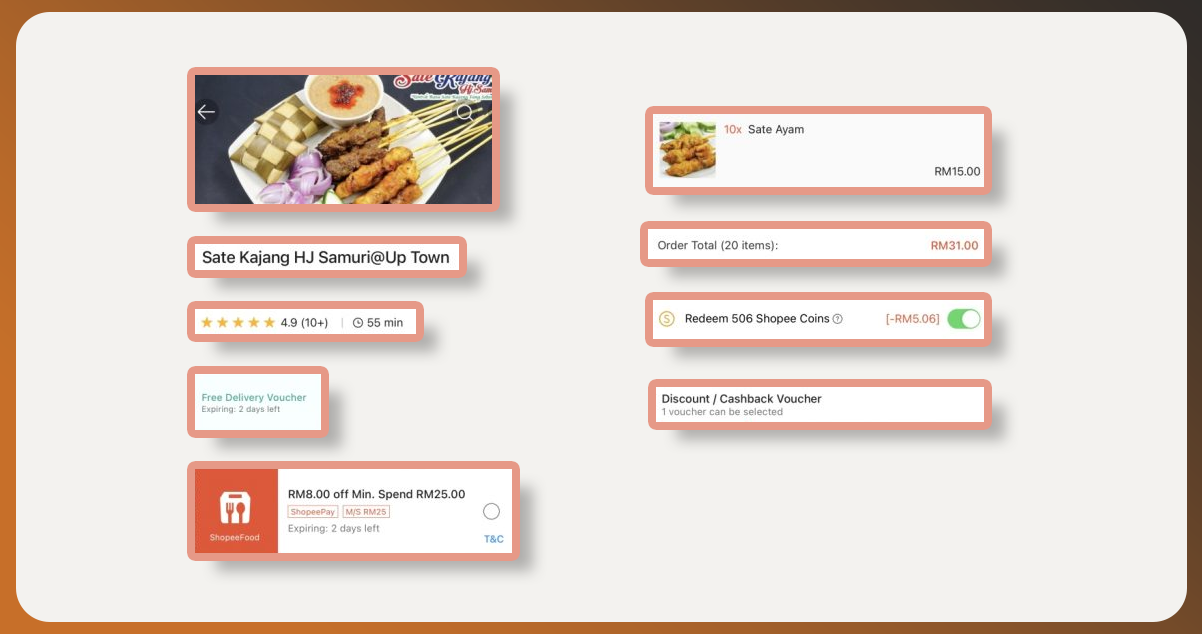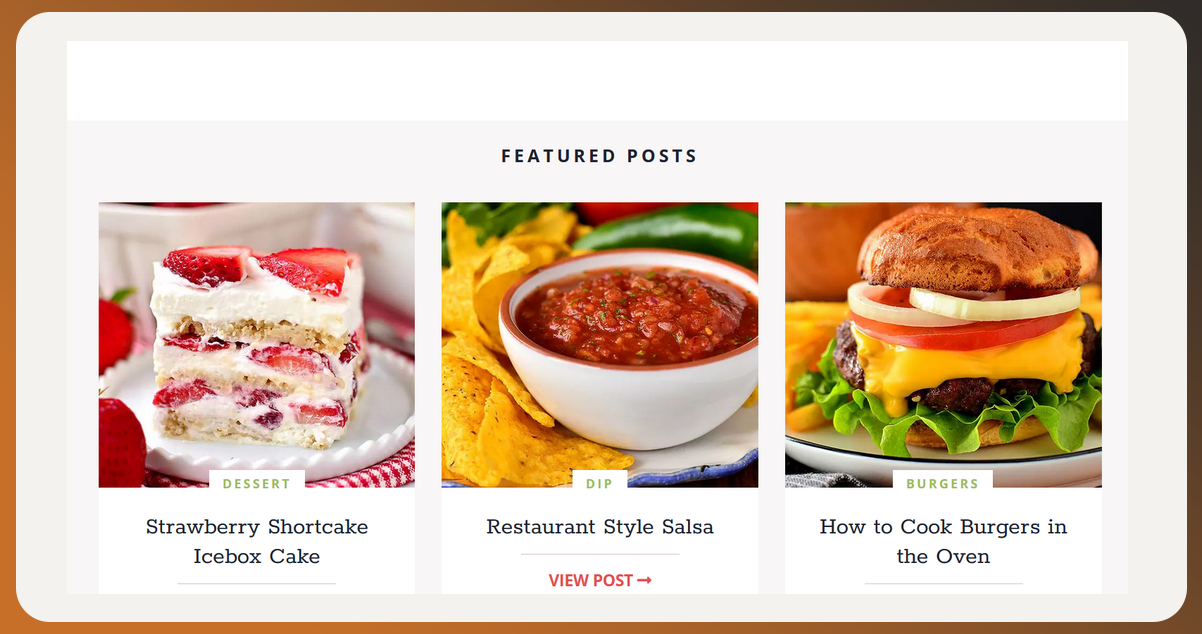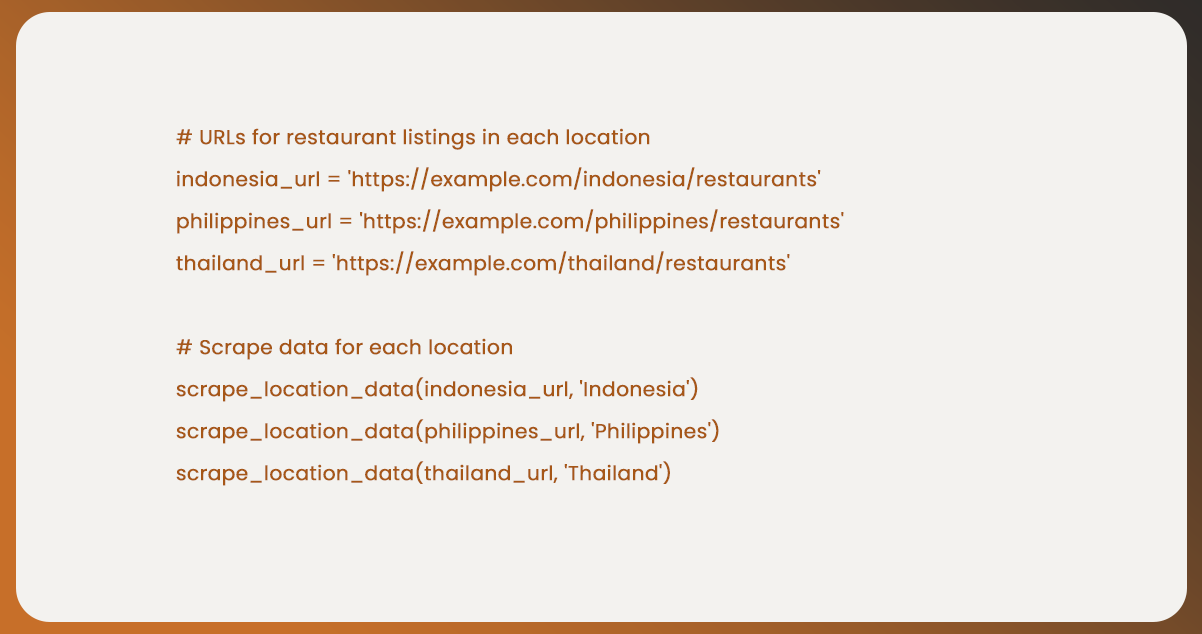By embarking on a gastronomic odyssey through Southeast Asia, exploring culinary treasures in Indonesia, the Philippines, and Thailand beckons. The strategic extraction of restaurant and menu data becomes paramount to unraveling the intricacies of these vibrant food cultures. This endeavor is not merely a technical pursuit but a cultural voyage into the heart of each region's diverse culinary offerings. From the bustling street markets of Indonesia to the rich and savory traditions of the Philippines and the aromatic delights of Thailand, scraping restaurant and menu data in Indonesia, Philippines, and Thailand unveils a mosaic of flavors, textures, and culinary nuances. This article embarks on a journey to delve into the methodology of scraping, offering a lens into the distinctive gastronomic landscapes of these Southeast Asian gems and providing a platform to appreciate, analyze, and navigate the diverse and evolving tapestry of culinary excellence.
List of Data Fields

Restaurant Information:
- Name
- Location (Address, City, Country)
- Contact Details (Phone, Email)
- Cuisine Type
- Operating Hours
Menu Details:
- Dish Names
- Descriptions
- Ingredients
- Prices
- Portion Sizes
- Dietary Labels (Vegan, Gluten-Free, etc.)
User Ratings and Reviews:
- Overall Rating
- Individual Dish Ratings
- User Comments and Reviews
- Date and Time of Reviews
Popular Dishes:
- Most Ordered Dishes
- Customer Favorites
Restaurant Features:
- Ambiance
- Seating Capacity
- Specialties
- Awards or Recognitions
Menu Categories:
- Appetizers
- Main Courses
- Desserts
- Beverages
Images:
- Dish Photos
- Interior and Exterior of the Restaurant
Process of Extracting Restaurant and Menu Data from These Locations

Identifying Target Websites: Identify popular restaurant review platforms or local directories in each country, such as Zomato, TripAdvisor, or local equivalents using Food Data Scraping Service.
Understanding Website Structure: Utilize browser developer tools to analyze the HTML structure of selected websites, identifying key elements housing information like restaurant names, menus, prices, and user reviews.
Selecting Scraping Tools: Choose the appropriate restaurant data scraper based on the website's complexity. Libraries like Beautiful Soup or Scrapy can be employed to navigate and extract data efficiently.
Setting Up the Environment: Install and configure the selected scraping tools in a virtual environment. Ensure a clean workspace and manage dependencies for smooth development.
Writing Scraping Scripts: Develop Python scripts tailored to each website's structure. Navigate through the HTML elements to extract restaurant details, menu items, prices, and other relevant information.
Handling Multilingual Content: Given the multilingual nature of these regions, account for different languages and character sets in the scraping scripts to capture menu items and descriptions accurately.
Ensuring Ethical Scraping: Adhere to the terms of use of each website to ensure ethical scraping practices. Avoid overloading servers with too many requests and respect website policies.
Data Storage and Analysis: Choose an efficient method for storing the scraped data, such as a database. Organize the information for easy querying and analysis to derive meaningful insights.
Comparative Analysis: Compare scraped data across Indonesia, the Philippines, and Thailand to identify regional culinary trends, popular dishes, and price variations.
Leveraging Insights: Utilize the extracted data to gain insights into the culinary preferences of each location. Identify trending dishes, popular cuisines, and unique menu offerings that define the gastronomic landscape.
Steps Involved
To scrape restaurant and menu data from three locations (Indonesia, Philippines, and Thailand) using a Python script, you can follow these general steps. Remember that the specific implementation may vary depending on the structure of the websites you are targeting. In this example, we'll use BeautifulSoup and requests for web scraping.
Step 1: Install Required Libraries
Make sure you have the necessary libraries installed. You can install them using the following:
pip install requests
pip install beautifulsoup4
Step 2: Import Libraries and Set URLs
Create a Python script and import the required libraries.
Set the URLs for each location.
import requests
from bs4 import BeautifulSoup
import csv
Step 3: Write a Function to Scrape Data
Define a function that will scrape restaurant and menu data from a given location URL.

Step 4: Scrape Data for Each Location
Call the function for each location with the respective URLs.

Step 5: Run the Script
Save your script and run it using a Python interpreter:
python script_name.py
Note:
- Adjust the URLs, HTML tags, and classes based on the structure of the actual websites.
- Handle potential issues such as anti-scraping measures or changes in website structure.
- Be aware of and comply with the terms of use of the websites you are scraping.
- Enhance the script with additional error handling and features as needed.
Conclusion: Scraping restaurant and menu data from three diverse locations—Indonesia, the Philippines, and Thailand—unveils a rich tapestry of culinary insights. By leveraging Python scripts and web scraping tools, we've delved into the unique gastronomic offerings of each region, capturing restaurant names, cuisines, menu items, and prices. This endeavor serves as a gateway to understanding the varied culinary landscapes, from the aromatic delights of Thai cuisine to the flavorful traditions of Indonesia and the savory nuances of the Philippines. The extracted data provides a valuable resource for businesses, researchers, and food enthusiasts, offering a nuanced understanding of regional preferences, popular dishes, and pricing trends. As our restaurant and menu data scraping services navigate this culinary exploration, it becomes evident that the amalgamation of technology and gastronomy opens doors to a world of flavors, contributing to a deeper appreciation of the diverse and ever-evolving global food scene.
For profound insights, connect with Food Data Scrape. We specialize in Food Data Aggregator and Mobile Restaurant App Scraping, offering comprehensive data analytics and insights to enrich your decision-making and elevate your business strategies. Reach out today to unlock a pathway to success guided by data-driven intelligence.
























































































